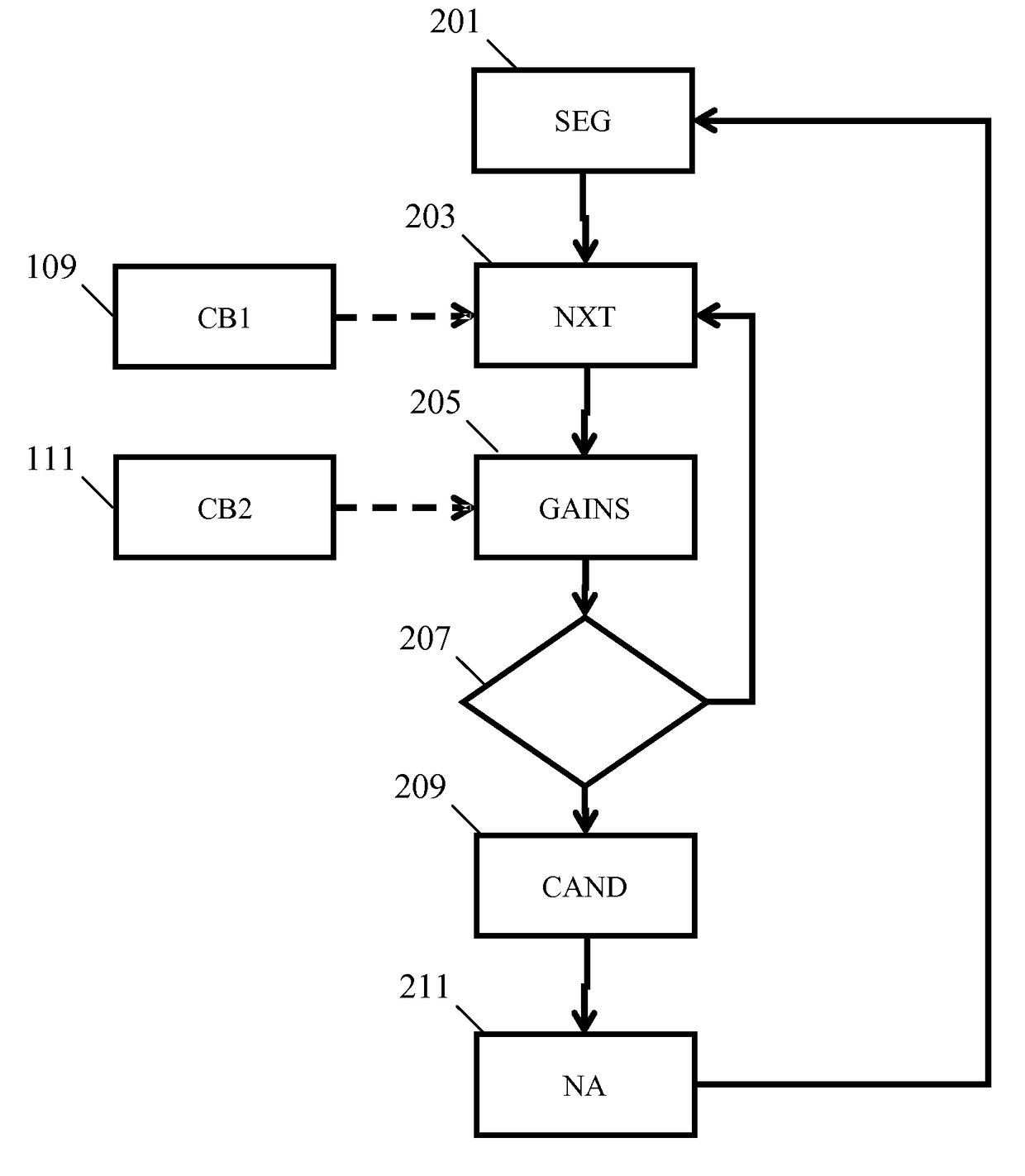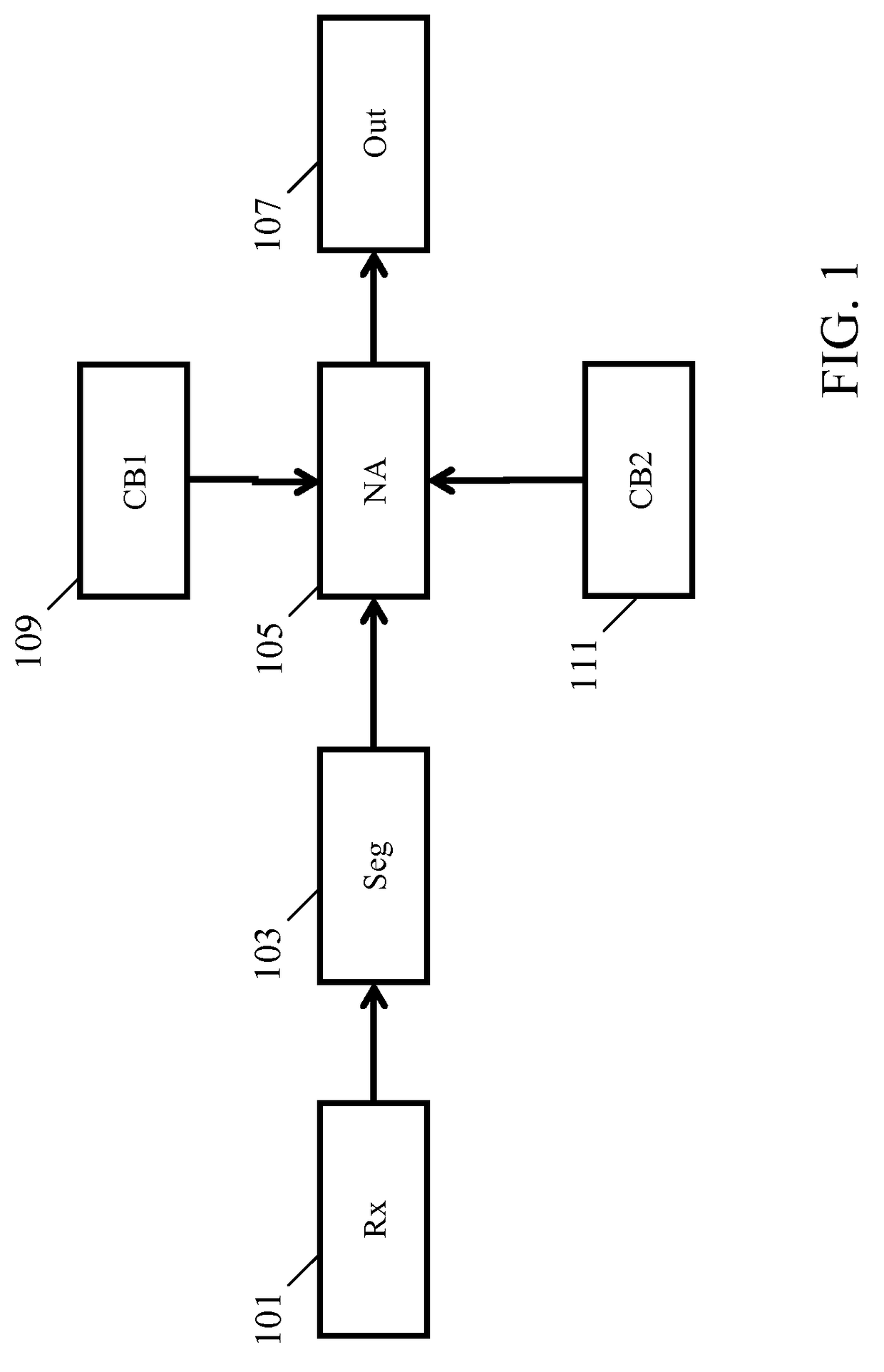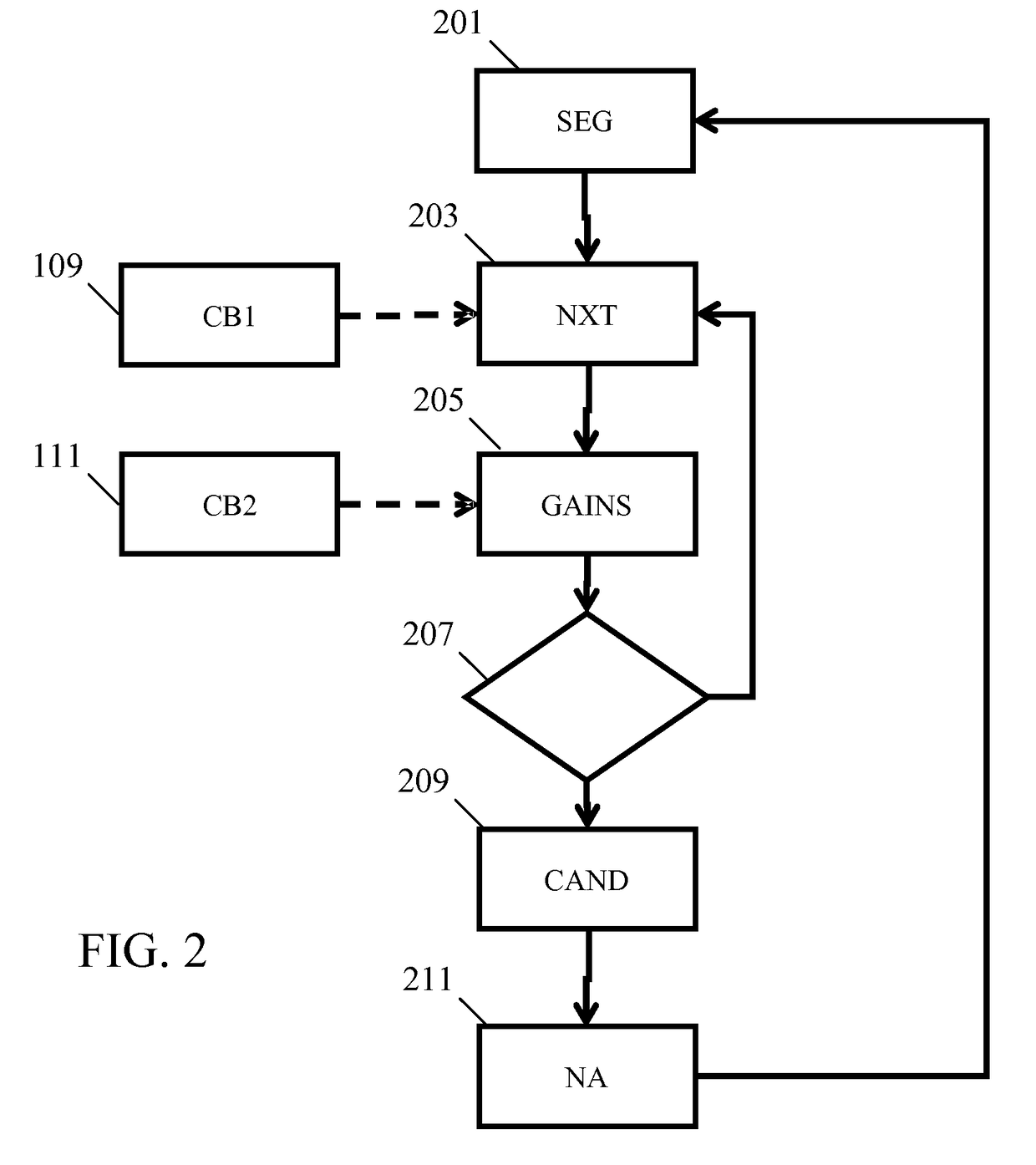Audio signal noise attenuation
a technology of audio signal and noise attenuation, applied in the field of noise attenuation, can solve the problems of reducing the noise of single-microphones in mobile telephony, unable to use beam formers to suppress high noise levels, and the absence of multiple microphones, so as to facilitate noise attenuation and reduce computational resources , the effect of efficient noise attenuation
- Summary
- Abstract
- Description
- Claims
- Application Information
AI Technical Summary
Benefits of technology
Problems solved by technology
Method used
Image
Examples
Embodiment Construction
[0051]The following description focuses on embodiments of the invention applicable to speech enhancement by attenuation of noise. However, it will be appreciated that the invention is not limited to this application but may be applied to many other signals.
[0052]FIG. 1 illustrates an example of a noise attenuator in accordance with some embodiments of the invention.
[0053]The noise attenuator comprises a receiver 101 which receives a signal that comprises both a desired component and an undesired component. The undesired component is referred to as a noise signal and may include any signal component not being part of the desired signal component.
[0054]In the system of FIG. 1, the signal is an audio signal which specifically may be generated from a microphone signal capturing an audio signal in a given audio environment. The following description will focus on embodiments wherein the desired signal component is a speech signal from a desired speaker. The noise signal component may inc...
PUM
 Login to View More
Login to View More Abstract
Description
Claims
Application Information
 Login to View More
Login to View More - R&D
- Intellectual Property
- Life Sciences
- Materials
- Tech Scout
- Unparalleled Data Quality
- Higher Quality Content
- 60% Fewer Hallucinations
Browse by: Latest US Patents, China's latest patents, Technical Efficacy Thesaurus, Application Domain, Technology Topic, Popular Technical Reports.
© 2025 PatSnap. All rights reserved.Legal|Privacy policy|Modern Slavery Act Transparency Statement|Sitemap|About US| Contact US: help@patsnap.com



